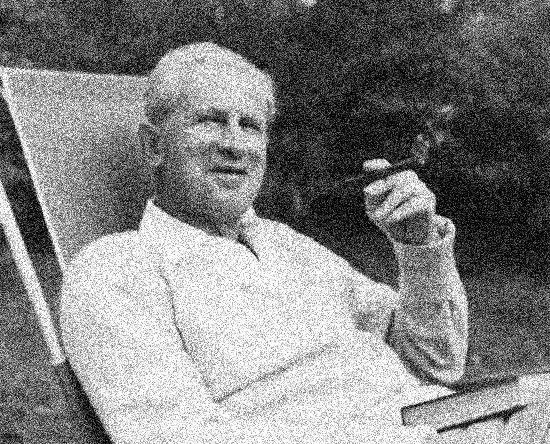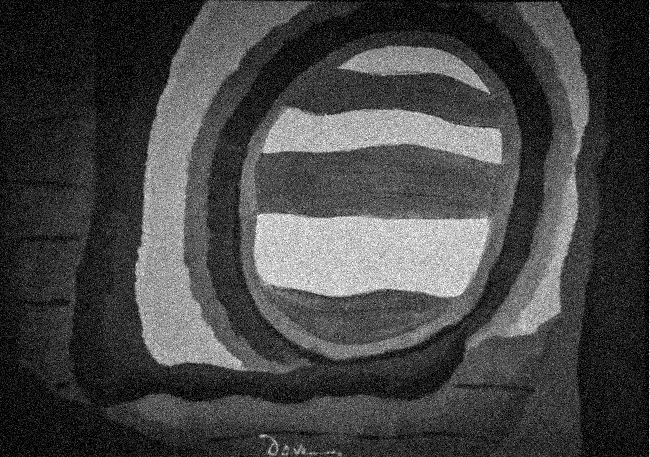Two is Too Many
A response to Jeremy Cohan and Benjamin Serby’s “The Two Souls of Marcuse’s One-Dimensional Man .”

Jeremy Cohan and Benjamin Serby’s recent Catalyst essay, “The Two Souls of Marcuse’s One-Dimensional Man,” does an excellent job of introducing “the prophet of the New Left” to a new generation of socialists. They argue that Marcuse’s understanding of advanced capitalist society as having co-opted the revolutionary energy of the working class is essentially correct, and affirm his call to unearth the deeply dissatisfying aspects of our “deeply sick society” as a way of fermenting class consciousness. But more importantly they point out the many dead ends of Marcuse’s thought—its cultural radicalism, unjustified belief in new subjects of history, and its ultraleftism—as well as the limitations of his Marxist framework, which, in their view, is put to better strategic use by the likes of André Gorz, Ralph Miliband, and Bayard Rustin.
Cohan and Serby also provide a diagnosis of the cause of this bipolar split in Marcuse’s thinking. In totalizing the integrative capacity of advanced capitalism, in essentially seeing workers as having been bought off with material benefits to accept a society that they nonetheless feared, hated, and did not control, Marcuse inevitably turned to a rather desperate utopianism that was overinvested in the wild ways of young people as bearing the seeds of change. In Marcuse’s words, “advanced industrial society is capable of containing qualitative change for the foreseeable future”, but nonetheless “forces and tendencies exist which may break this containment and explode society.” As Cohan and Serby note, One-Dimensional Man is “virtually silent on the second point”—and indeed it was more of a needed fantasy in his work than a materialist discernment of dialectical potential.
What’s curious, of course, is that this paradox, seemingly a recipe for a paralyzed pessimism broken up with utopian daydreaming, bore real political consequences in that it found instantiation in the student movement and the New Left. As Cohan and Serby explain,
Invoking Marcuse against calls like Bayard Rustin’s for a coalition politics anchored in the trade union movement, these activists looked beyond purportedly oppositional groups that had succumbed to the lures of parliamentarism and the welfare state, calling instead for “a thoroughly democratic revolution” led by “the most oppressed”—those least captured by existing institutions.
Practically this meant not only a disconnection from but an active hostility to what in retrospect was clearly the best organized force available for pushing beyond the post-war compromise, reactivating working-class contestation, and improving the welfare state: Civil Rights organizers turned toward economic reforms and allied with the trade unions. It is remarkable how disconnected and hostile the Marcuse-led New Left was from and toward the Civil Rights-Old Left organizing of Randolph, Rustin, and others: it’s almost like they occupied parallel universes in our current historical consciousness.
As historian James Heartfield explains, “The New Left was self-consciously opposed to the ‘old left’, meaning the Communist Parties, the reformist parties and, largely, the trade unions.” They were not a new tendency working within a broader current to channel it in a certain way; it was a new tendency out to replace the old. Heartfield chalks this up to seeing an organizational intransigence, i.e. tough work ahead of them, and choosing the easy road. In his words,
The prospects for a radical intervention into the American labor movement were equally testing. The new generation of radicals did not, as a rule, challenge the official leadership of the trade unions, but side-stepped the organized working class altogether, to find new constituencies and fields of activism. Taking the path of least resistance, these radicals took their struggle elsewhere.
This was the real genesis, in his view, of theories of new subjects of histories, of turns to the more marginalized, which was then justified with Marcuse’s theory of total integration. Rather than accept the difficult task of reforming the labor movement from within, student and New Left activists employed Marcuse to justify their dismissal of it. The desire to avoid work was turned, with Marcuse’s help, into the belief that there was no work worth doing.
Here I would disagree with Cohan and Serby’s claim that Marcuse’s admission to being stuck was “intellectually forthright.” Marcuse, and the young people who followed him, felt stuck because they were disconnected from, and again actively hostile to, the forces that were still moving. Randolph and Rustin did not feel stuck in this manner. And they sure could have used some help from the students in carrying forward the demands for a job guarantee, universal healthcare, and an improved social safety net all captured in the Freedom Budget. But then this would have meant admitting that the momentum still lay with the Old Left, even if the New Left bore the mindless vibrancy of youth.
Perhaps this is actually where a reassessment of Marcuse and the New Left is most useful: an extreme form of bad faith was practiced at the time that still bears echoes in the present. The revived socialist movement today is overwhelmingly a generational phenomenon, and its political intuitions are much closer to the New Left than the Old. That said, it is heavily invested in the revitalization of organized labor: no socialist today would dare totally dismiss trade unions and thus not worthy of one’s time. This is a cruel historical irony: in the heyday of the New Left, organized labor was at the height of its power and influence, and it was dismissed as captured by advanced capitalist society. Today, organized labor is at the nadir of its power, and the Left clings to it as flotsam on the open sea.
But the manner in which today’s Left holds on to the old institutions was curiously prefigured by Marcuse himself, in a way that is not true of the sixties radicals in general. Cohan and Serby unearth a quote of Marcuse’s from an interview, in which he admits that “in spite of everything that has been said, I still cannot imagine a revolution without the working class.” At the time, this was a kind of rebuff to the young radicals who followed him, a reassertion of his Marxist roots that Cohan and Serby find praiseworthy. But the assertion seems really like a lament: if only the poor and marginalized bore true agency, so that we could move beyond this whole “working class” thing. As a Marxist, Marcuse understood that the working class, given its structural position in the society, bore the kind of power that gave it agency, but he also saw it as regressive and integrated, and longed for a politics that was solely about the elevation of the margins.
Here, in a single, contradictory thought containing both of Marcuse’s two souls, is his true legacy today: not the pessimism or the utopianism but the ever reluctant admission that the working class still matters. This is the characteristic position of today’s Left, who have integrated the working class into one pole of their intersectional analysis but would much rather talk about trans issues, sex work, racial justice, and colonized others. They are nominally committed to rebuilding unions and the power of working people more generally, but not so much as to include them in generating policy proposals, and definitely not so much that they will hold their tongues when, say, the unions support a bipartisan infrastructure bill. These union bureaucrats and the regressive workers they represent—can’t live with them, can’t live without them!
The Bernie Sanders primaries brought together two streams of leftists: on the one hand, those who still look back to Occupy as the formative political moment for today’s socialist movement, who are thoroughly intersectional, and find their own views reflected in the left media world; and on the other, those who look to the unions and real organizing efforts of working people, who despise woke culture wars, and who regularly roll their eyes at the claims of the media institutions who supposedly represent them. Though they wouldn’t recognize an old white man as their forebearer, Marcuse really is the patriarch of the former, while the latter takes more inspiration from the Old Left, and the organizing efforts of Randolph and Rustin. Marcuse’s two souls still war within the former, lending contradictory expression to the characteristic professional-class Left projects like the Green New Deal and care work proposals. Perhaps what is needed today, then, is not opting for one of Marcuse’s souls over the other, but the drowning of them both under the weight of a simple question: “Which side are you on?”
■
Dominic King is a writer from Cleveland (but temporarily a content creator living in Brooklyn).



